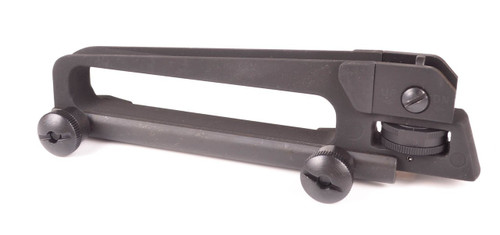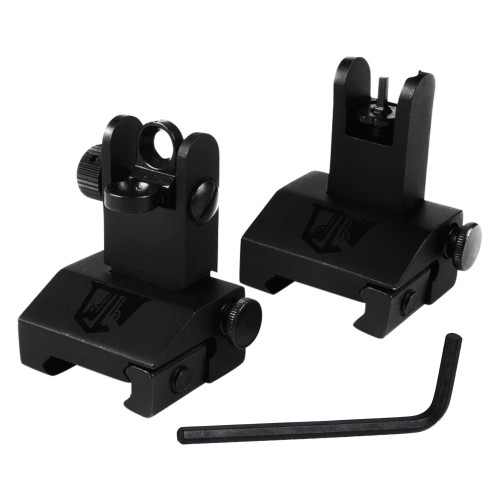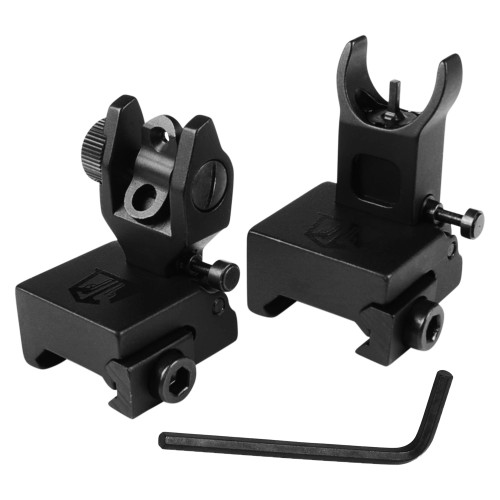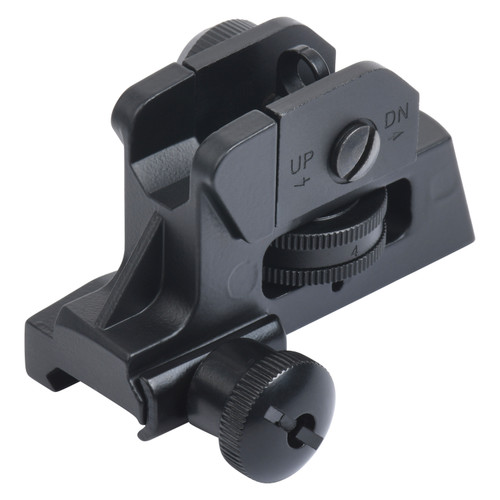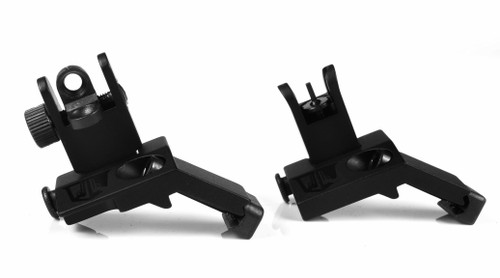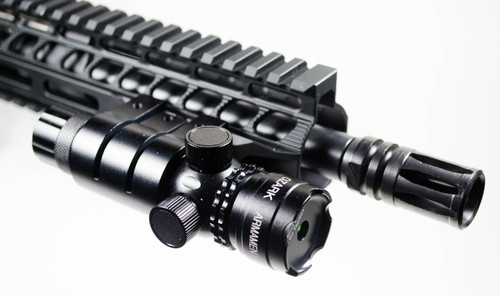Posted by Matt Rice on Feb 14th 2024
Master the Art of Sighting in an AR-15's Iron Sights: A Comprehensive Guide
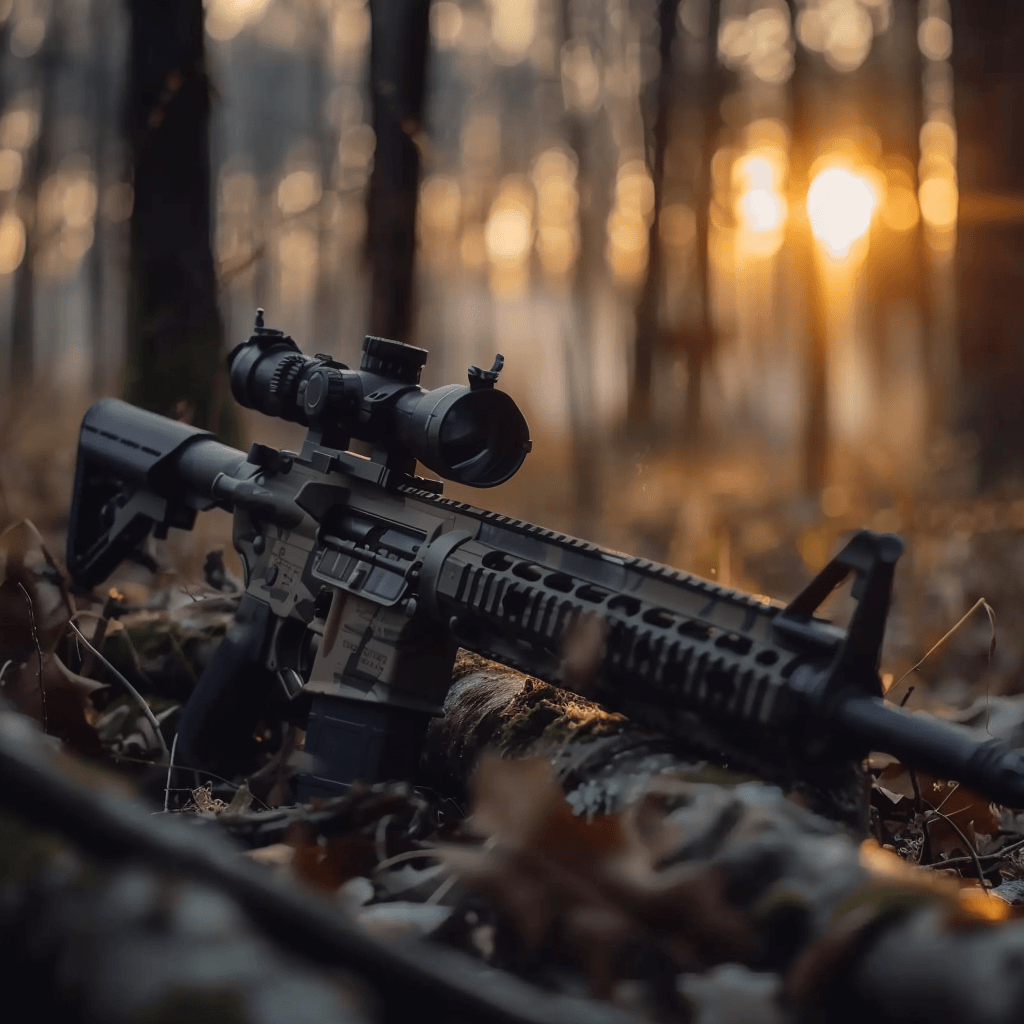
Sighting in an AR 15 Colt 6920 with iron sights can be a bit tricky, but we're here to help. With the right approach, you'll have your iron sights zeroed in no time. We'll guide you through the process, from setting your sights at 100 yards to making necessary adjustments for windage and elevation.
We'll also investigate into the details of how the front sight post and rear sight work together in the sighting process. We'll explain how a taller front post can bring impacts down and how adjusting the rear sight can change the point of impact. So, let's get started on mastering the art of sighting in your AR 15 iron sights.
Importance of sighting in an AR-15 iron sight
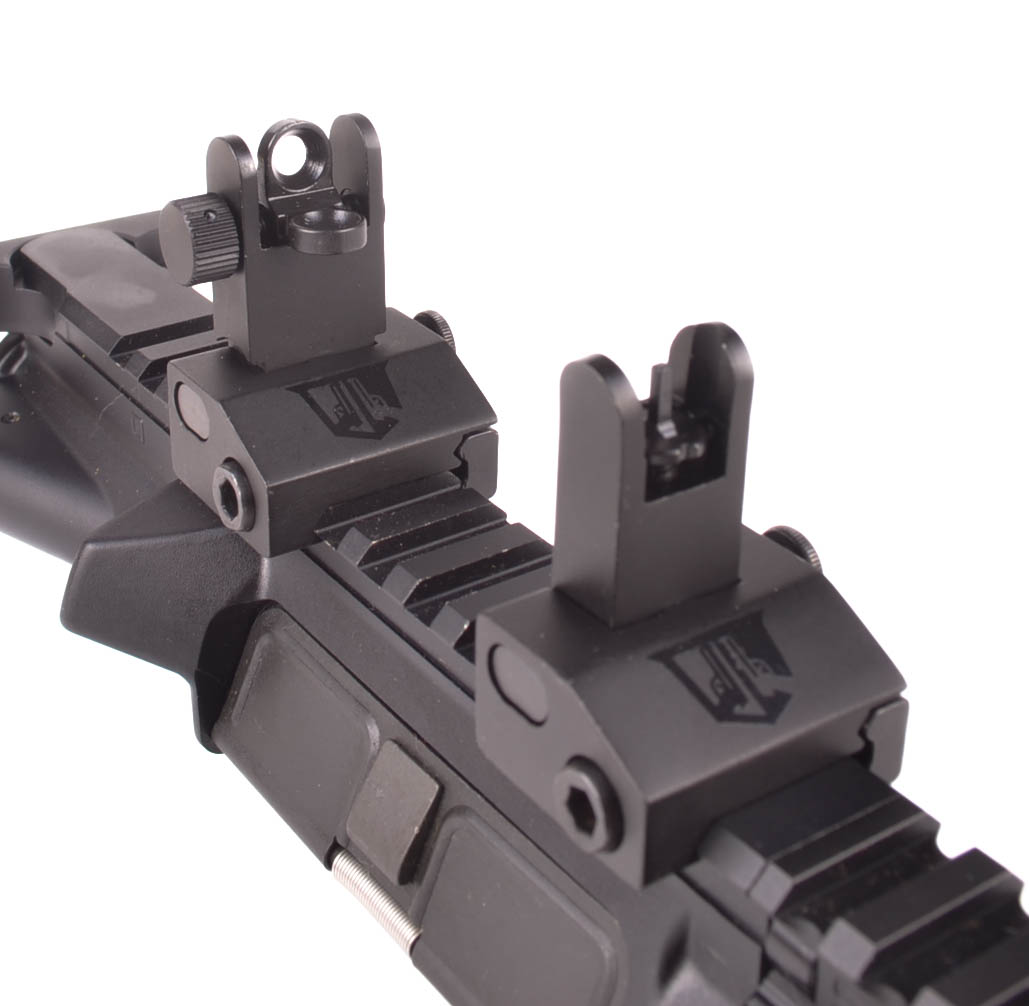
Getting your AR-15 iron sights just right is like the secret sauce to stellar shooting. It's all about accuracy, consistency and performance. When your AR-15 iron sights are set perfectly, trust me, you'll see the difference in your results.
Accurate Shooting
AR-15 iron sights are designed to increase the shooter's accuracy. The proper use of iron sights can transform a difficult shot into a precise, easy target. For example, an AR-15 rifle, having a distance between front and rear sights of 26.25 inches, that was previously shooting too high on a target could be fixed simply by changing the front sight blade height, reducing point of impact errors. By adjusting the front sight from 0.505 inches to 0.582 inches, one can effectively hit the desired point of impact. This corrective measure showcases the effect of proper sighting on your AR-15 weapon's accuracy.
Consistency in Aim
Sighting in allows the shooter to know exactly where to aim, providing a valuable tool for consistent shots. With practice, this consistency can dramatically improve precision and reduce frustration, especially during target practice utilizing grid paper targets.
Consider a shooting position from 25 yards. After firing the first group and measuring the distance from the center of the group to your aiming point, adjusting your sights can ensure hits close to the desired point of impact in subsequent shots. Even small adjustments such as moving the front sight to impact the bullet up or down can lead to a significant improvement in shot consistency.
Understanding the Rifle's Performance
To fully understand the performance and potential of an AR-15, getting to know its iron sights is crucial. For example, the common USGI adjustable rear sight found on the M16A4 and M4 has half MOA clicks. These clicks account for about 5 MOA on a rifle length sight radius and around 7.5 MOA with a shorter carbine sight radius.
By sighting in iron sights on AR-15, one can gain insights into how each adjustment can deliver smaller point of impacts with longer sight distances. These dynamics not only uncover the advanced operation behind the AR-15 rifle but also stimulate strategic planning in sight adjustments.
So before you dismiss the traditional iron sight, consider the many ways sighting in can enhance your AR-15 shooting experience. To keep improving your shooting skills over time, always document your adjustments and results. This sort of careful record-keeping will help track your progress, highlight any areas for improvement, and eventually make you a better, more confident shooter. By using iron sights, no longer will you simply be pulling the trigger. You'll be carefully aligning, adjusting, and mastering every shot you take.
Factors to consider before sighting in
Before diving into the process of sighting in an AR-15 iron sight, there are several factors that we need to take into consideration to ensure accuracy and effectiveness. These factors include the distance, ammunition, and weather conditions, which can significantly affect our iron sight adjustments and overall performance.
Distance
The first thing we need to consider when sighting in AR-15 iron sights is the distance between our location and the target. Different distances require various sight adjustments. If we're zeroing our sights at 25 yards, our iron sight settings will be different compared to when we're zeroing the sights at 50 yards. Knowing this distinction is crucial in making accurate shots.
Ammunition
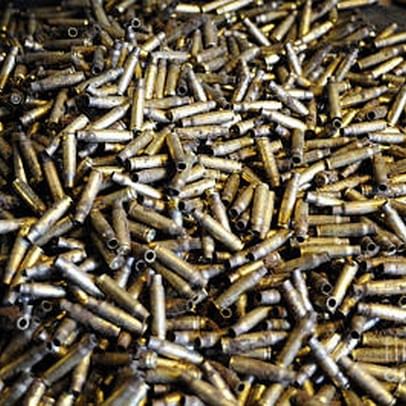
Another key factor we need to take into account is the ammunition. Ammunition greatly influences how to sight in the iron sights on our AR-15. Different bullet weights and types can impact where the bullet hits the target. For the best results, always sight in your AR-15 with the ammunition you plan to use most often.
For instance, if you're zeroing your rifle with a 77-grain ammo, it'll behave differently compared to if you were using, say, a hair-splitting 62-grain option. So, always plan accordingly for a rewarding shooting experience.
Weather Conditions
Last but not least, weather conditions are an essential factor to consider when sighting in an AR-15. Wind speed and direction can affect the bullet's course, while temperature and humidity can alter the ballistic performance of your rounds. By considering these elements and adjusting our AR iron sights accordingly, we can expect much more accurate results. Our Battle Sights (BUIS) are designed to withstand even the most challenging weather conditions.
In the next part of our guide, we'll be demonstrating how to sight in iron sights on an AR, taking into account the applied factors. Stay tuned as we investigate deeper into making those fine adjustments for greater accuracy and consistency.
Tools required for sighting in an AR-15 iron sight
Sighting in an AR-15 iron sight requires certain essential tools for an accurate and efficient process. These tools not only enhance precision but also ensure that the alignment is optimal for the improved shooting experience. Below, we take a closer look at some of these important tools.
Firearm Rest
First on our list is a Firearm rest. The significant role of a firearm rest in sighting in AR-15 iron sights cannot be underestimated. It is pivotal in providing stability during the sighting-in process. By using a firearm rest, we can maintain a consistent shooting platform. This, in turn, will eliminate variables that can affect shooting accuracy. Hence, for a precise sighting-in, it's mandatory to use a stable shooting rest.
Boresighter
Secondly, a Boresighter is another essential tool to sight in iron sights on an AR-15. It assists in lining up the shooter's line of sight with the firearm bore. While it's not a substitute for a thorough sighting-in process, a boresighter can create an initial alignment that saves time and ammunition. Use of a boresighter aims to get you on paper faster. It ensures that your first shot is as close to the target point as possible, avoiding unnecessary wastage of bullets during sighting in.
Targets
Finally, we have Targets. The importance of targets in sighting in AR-15 iron sights is irrefutable. The use of targets at varying known distances is an integral part of iron sight adjustments and overall firearm performance. Different types of targets are available, each designed for specific shooting scenarios or practice drills. Targets vary in size, shape, and contrast, but all provide a clear aiming point that assists shooters in making precise sight adjustments.
By factoring these tools into your sighting in process, you can optimize effort, maximize resources, and enhance the accuracy of your AR-15 iron sights. Remember to keep your gear in top-notch condition while ensuring all sight adjustments, front or rear, reflect in your sight picture. Also, consistent practice with your AR iron sights and getting a good feel for your rifle's performance sets the foundation for consistent shot placement - the ultimate destination in any shooter's journey.
Next, we'll investigate into how to sight in your iron sights, with a step by step guide to ensure you're on the path to pinpoint accuracy. We'll talk about getting on paper, winding, elevations, and of course, how to fine-tune your shots through iron sight adjustments, so your point of aim aligns perfectly with your point of impact.
Step-by-step process of sighting in
As firearm enthusiasts, we understand the value of accuracy and reliability when it comes to AR-15 iron sights. We have often marveled at how a correctly sighted iron sight can improve our shooting results. Let's jump into the step-by-step process of adjusting iron sights.
Preparing the Rifle and Rest
Foremost in sighting in AR 15 iron sights is firearm preparation. We firmly believe in using the right tools, hence, having a firearm rest and a boresighter is essential. These tools allow us to maintain consistency while eliminating variables that can affect shooting accuracy.
During the sighting process, we ensure that the rifle is placed securely on a stable shooting rest. Also, we do not overlook the importance of using the ammunition intended for actual use. Using a substitute can skew the sight adjustment process and lead to unfavorable results.
Establishing a Baseline
The next step we undertake in this process involves using a boresighter to establish an initial alignment. This alignment is crucial as it saves time and ammunition during the sighting-in process. As part of the initial alignment, we make sure to mark the center of the shot group on the target.
To maintain precision while adjusting AR iron sights, we highly recommend the use of grid paper targets. These targets have proved to be highly useful when counting the number of clicks it takes to move the point of impact to the desired location.
Making Initial Adjustments
Having established a baseline, our focus then shifts to the critical task of adjusting elevation and windage on the AR-15. While adjusting the sights, we keep in mind a key tip learned from years of personal experience.
By slightly over adjusting the elevation and then fine-tuning it with minor adjustments, we are able to quickly zero in on the correct elevation setting. This tip greatly enhances the process of sighting in iron sights on an AR.
Fine-tuning the Sight Alignment
The last phase of sighting in an AR 15 iron sights involves careful fine-tuning for optimal accuracy.
This process includes understanding windage (horizontal movement) and elevation (vertical shifts), which are adjusted using knobs or dials on the sight, typically measured in MOA - Minute of Angle.
The goal is to achieve consistent shots hitting the intended target, which requires shooting practice, noting where bullets land relative to aim, and making necessary adjustments.
The process should be gradual and based on observed patterns rather than rushed changes.
Ultimately, achieving consistent hits depends more on mastering sight alignment through careful adjustments than on high-quality equipment. With patience and practice, one can improve shooting accuracy.
Troubleshooting common sighting in issues
When sighting in an AR-15 iron sight, we may encounter a few common hiccups. But, as iron sight users, we know that patience and precision are integral to overcoming these challenges. In this section, we will explore potential issues such as scope misalignment, inconsistent grouping, and the need for elevation and windage adjustments.
Scope Misalignment
An improperly aligned scope may throw off the entire sighting process. Aligning your A2 Rear Iron Sight or Micro Flip Up Backup Sight correctly can significantly improve results. Start by booting your rifle and rest, establishing a baseline with a bore sighter while ensuring the sight and the bore are aligned.
Inconsistent Grouping
The next issue could be an inconsistent group pattern when shooting with your AR-15 iron sights. To tackle this, it's important to observe the point of impact (POI) and group pattern attentively. In case the shots spread too wide, try addressing the possible human contribution to spread such as lining up sights, trigger control, loose mounting, inconsistent cheek weld, and others.
Consider using our AR 15 Carry Handle or HK Style BUIS for their precision and reliability. If you're still off even though these efforts, calculate the adjustments needed and give it another shot.
Elevation and Windage Adjustments
Finally, let's explore the concept of Elevation and windage adjustments. Bear in mind, changes in these parameters impact where the bullet hits the target. Through this AR 15 sighting in iron sight process, we can better understand our rifle's performance when dealing with varying ammunition types or weather conditions.
An example we can discuss involves a rifle with front and rear sights placed 2625 inches apart, firing on a 50-yard range. If the point of impact is too high, there's a need to adjust the front sight blade height to correct this imbalance. Using the provided formulas, we can determine precise adjustments needed to bring our shots on target.
Formula | Adjustments |
|---|---|
| Distance between front and rear sights (in) | 2625 |
| Firing range (yd) | 50 |
| Point of impact too high (in) | 53 |
| Front sight blade height (in) | 0.505 |
| Magnitude of change to front sight height (in) | 0.077 |
Remember, the actual amount of movement per click of adjustment depends on the distance between the front and rear sight. The longer this distance, the smaller the point of impact moves with each click of elevation or windage. People sighting in their iron sights on an AR could take advantage of our Ozark Armament's Battle Sight for reliable and convenient fine-tuning, regardless of the shooting conditions or firearm used.
By understanding these sighting in iron sights AR 15 challenges, we can make the needed adjustments to enhance our shooting accuracy, leading to a more pleasurable shooting experience overall. The coming sections will investigate into more details about sighting in iron sights, including distance consideration and the effects of various ammunition.
Tips for a successful sighting in process
When we're honing our skills on the firing range, ensuring that our AR-15 sighting in iron sights is properly adjusted is essential. The success of this process is dependent on a combination of factors: preparation, technique, and careful adjustment. By the end of this guide, you'll have an understanding of how to use iron sights on an AR-15, enhancing your precision at the range.
Take Your Time
While it might seem counterintuitive, rushing this process could lead to less accuracy over time. If we want to sight in AR-15 or M16A2 iron sights effectively, it's good practice to slow down and be meticulous about every step. Setting up the rifle's iron sights correctly might require some time investment initially, but it'll pay dividends by offering consistent, accurate shots during target practice or hunting trips.
Use Consistent Shooting Techniques
Repeatability is a cornerstone of accuracy when it comes to sighting in iron sights AR-15 style. This means finding a shooting technique that works comfortably and sticking to it throughout the sighting-in process. Consistency allows us to identify and correct any deviations from the desired point of impact.
The iron sights model you use, whether it's the HK Style BUIS, A2 Rear Iron Sight, or any other, will play a significant role in this consistency. Ozark Armament's variety of models, such as the Micro Flip up Backup Sights or the Fixed Canted Iron Sights, aid in maintaining consistent shooting techniques while proving to be reliable choices for any rifle enthusiast.
Keep Track of Adjustments
Making fine adjustments to the iron sights on your AR-15 can feel like an intricate puzzle. Every time we change the elevation or windage, it's essential to record the modification. By doing so, we're effectively mapping out the "sweetspot" where our iron sights need to be to strike the target accurately. The smallest of alterations in windage or elevation can dramatically shift the point of impact at longer ranges, so keeping track is the key to improving our long range shots.
Remember, sighting in AR15 iron sights isn't about rushing to the finish line; it's about fine-tuning a precision instrument. Using techniques that prioritize consistency and a careful approach will eventually result in a more accurate, consistently performing sighting system.
Frequently Asked Questions
What is the standard height for AR iron sights?
The standard height for an AR sight plane is approximately 2.6 inches above the bore, which is the height of an M4's front sight base. Standard height sights should be compatible with any other standard-height sight as well as a standard front sight base.
Are iron sights always accurate?
Iron sights can be incredibly accurate. However, any inaccuracies are often due to the shooter. With proper use, it should be possible to hit a torso-sized target at 300 yards with iron sights.
Do you zero iron sights?
Yes, it is strongly encouraged to zero your iron sights. This process can help you understand how your iron sights function. It's regardless of whether you consider iron sights outdated, zeroing them is a fundamental skill.
What is the best zero for ar15?
A 50/200 yards zero is considered optimal for police and civilian shooters due to its precision. This range might limit you to 200 yards, but it is more than adequate for most police and civilian circumstances.
How do you adjust the iron sight on an AR-15?
Adjusting an AR-15's front iron sight is straightforward. You just need to press the button at the front of the sight and use a tool to change the elevation. If windage adjustment is needed, simply turn the rear sight windage knob.
ARTICLE WRITTEN BY MATT RICE, OWNER OPERATOR OF OZARK ARMAMENT

